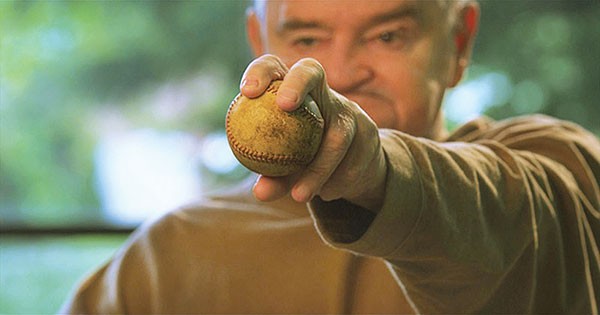Baseball, we are told, is as elemental as a guy with a rock throwing it as hard as he can at a guy with a stick, who then endeavors to hit it as hard as he can. Thus, the contest begins when the ball is pitched, and as Jonathan Hock’s entertaining documentary Fastball makes abundantly clear: Speed matters.
Hock has made films for ESPN’s 30 for 30, and Fastball fits into that series’ mostly breezy documentary mold: a round-up of contemporary interviews with baseball old-timers, archival footage and a micro-focus that proves surprisingly interesting even to non-fans. Some pitching legends are revisited, like Bob Feller and Sandy Koufax, but also little-known Steve Dalkowski, who missed the major leagues despite a super-fast pitch.
Hank Aaron, Goose Gossage, Nolan Ryan and others relate plenty of anecdotes about being on either side of a fastball. Bob Gibson attributes some of his heat to the anger he suppressed constantly confronting racism, while other players recall the trepidation at the plate when batting against a hard thrower: “I could get hit in the head and die.” The players make some stabs at the science: Ballplayers are superstitious, so it’s no surprise that their theories defy known properties of physics. Pitched balls, in fact, do not “rise up” near the batter, or “disappear.”
Hock brings in some real science guys from Carnegie Mellon, and they break down the “magic” of the fastball — from how the ball behaves in the air to the significant difference between balls traveling at 92 mph and 100 mph. They also get inside the batter’s brain, and explain how it is virtually impossible to hit a fastball.
Also fascinating, in a sport obsessed with statistics and records, is the history of trying to measure fastballs. Measuring fastballs began as early as 1912, with pitcher Walter Johnson, and over the years involved instruments ranging from a speeding motorcycle to today’s standard infrared beam. No spoilers, but the scientists break out the math books and, across history, re-crunch the numbers to make a claim for the fastest recorded pitch. Whooosh.














